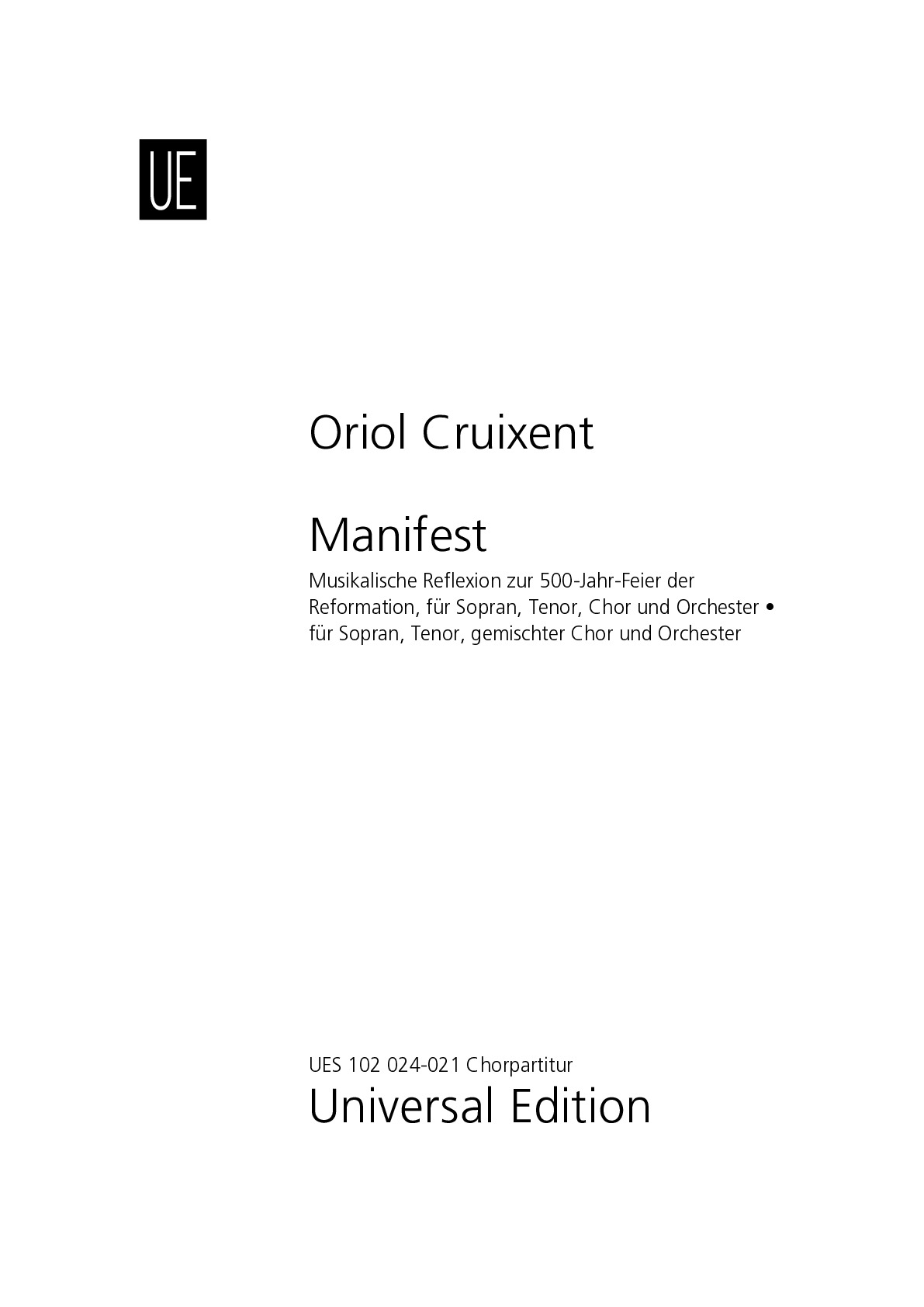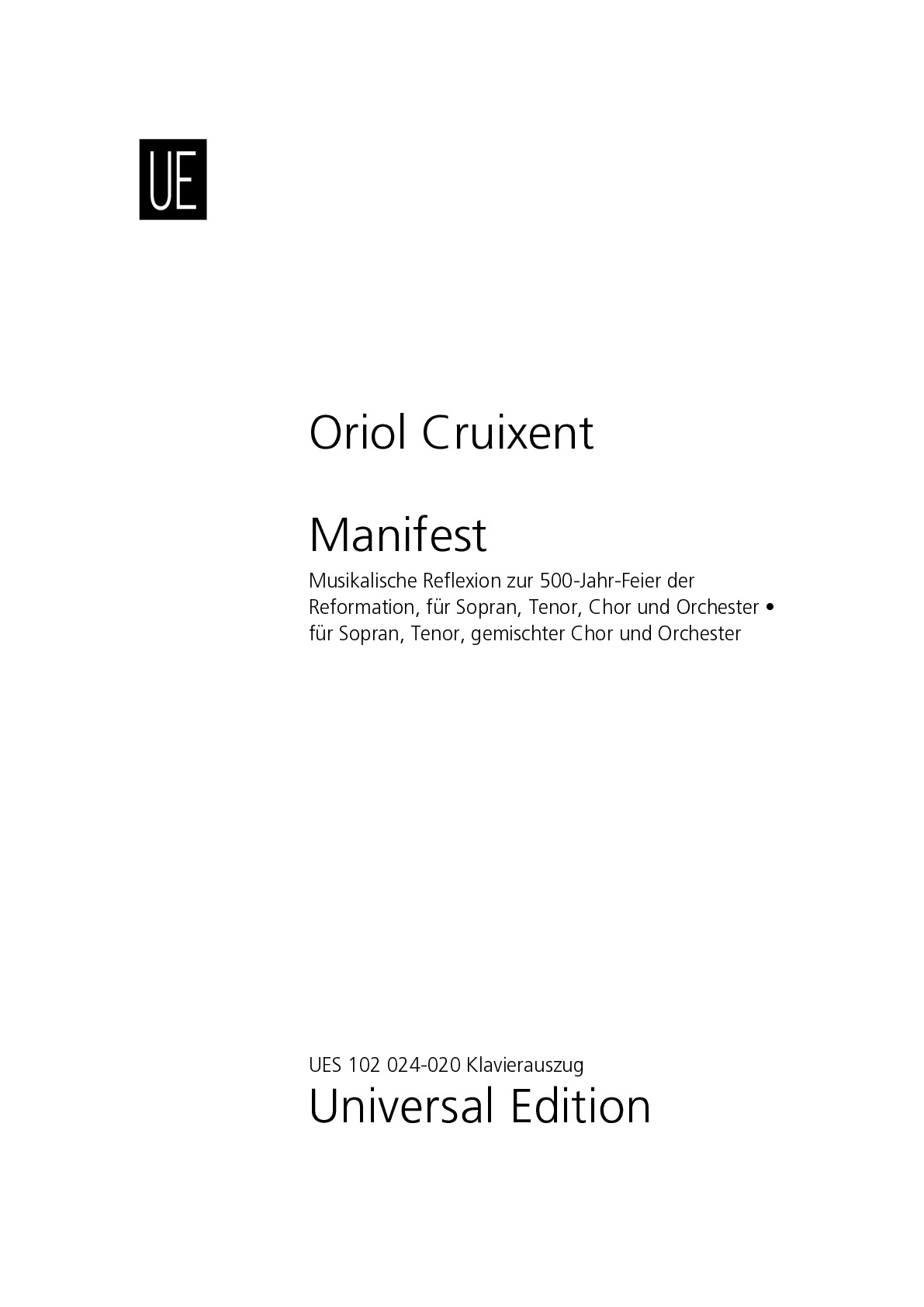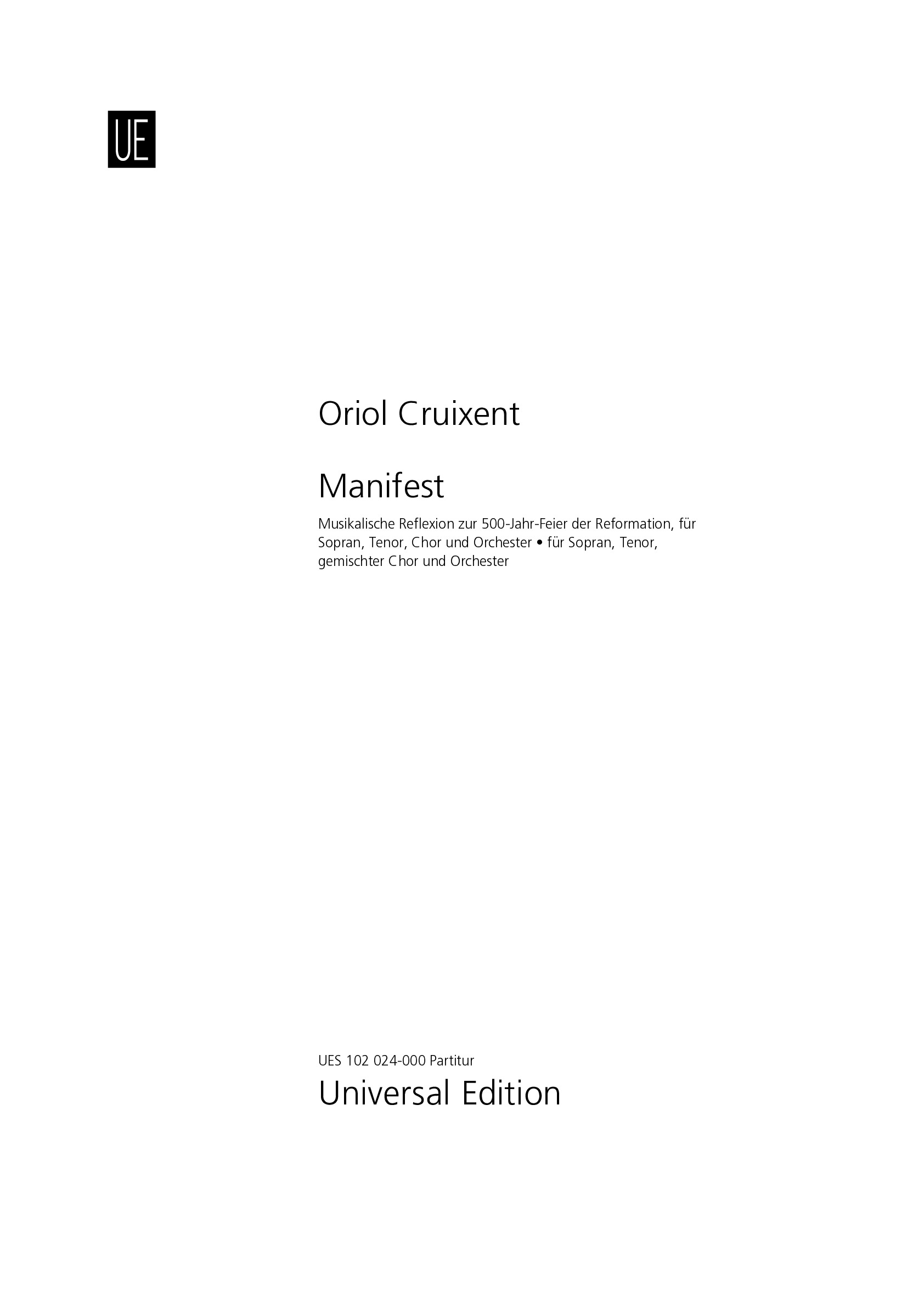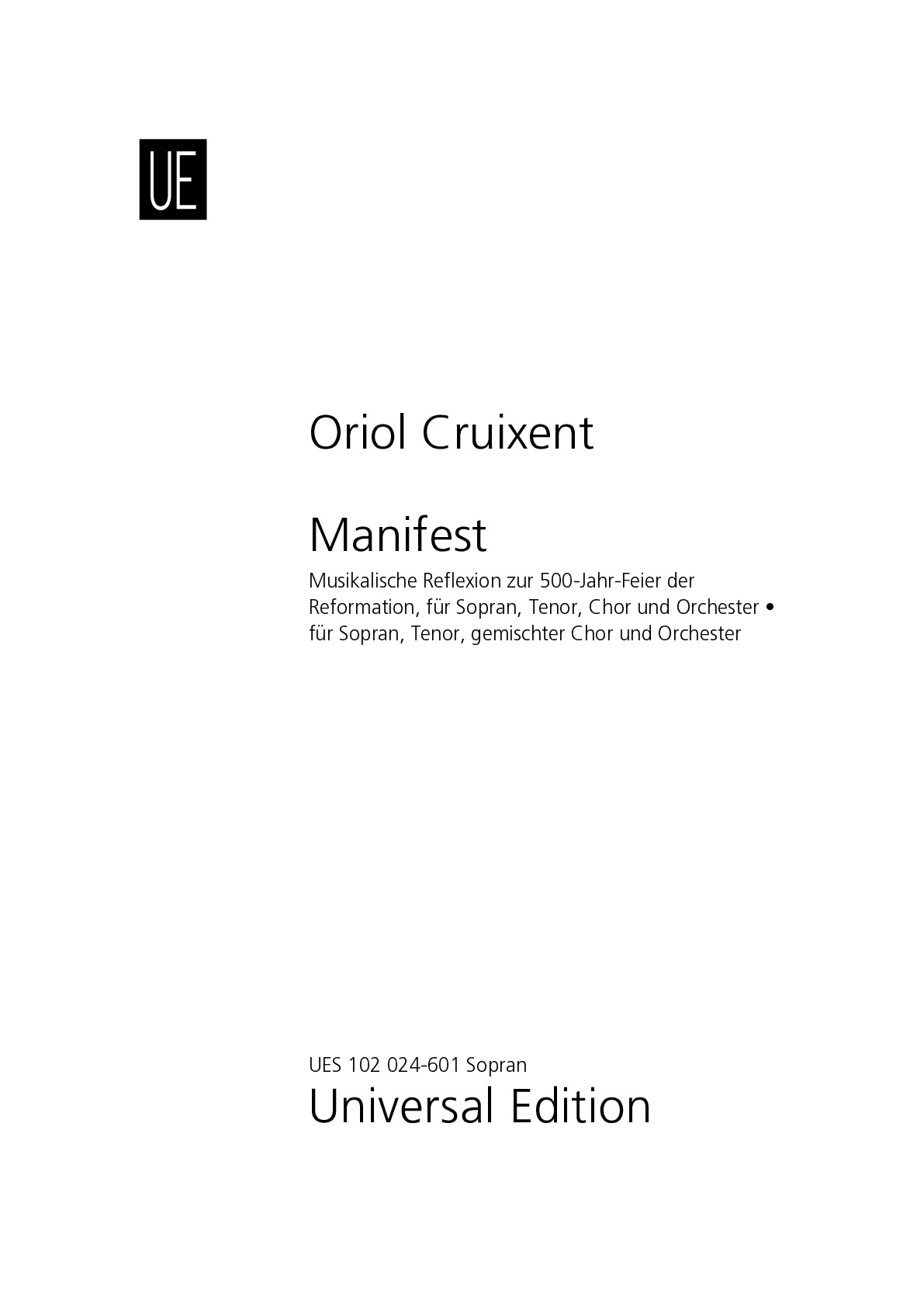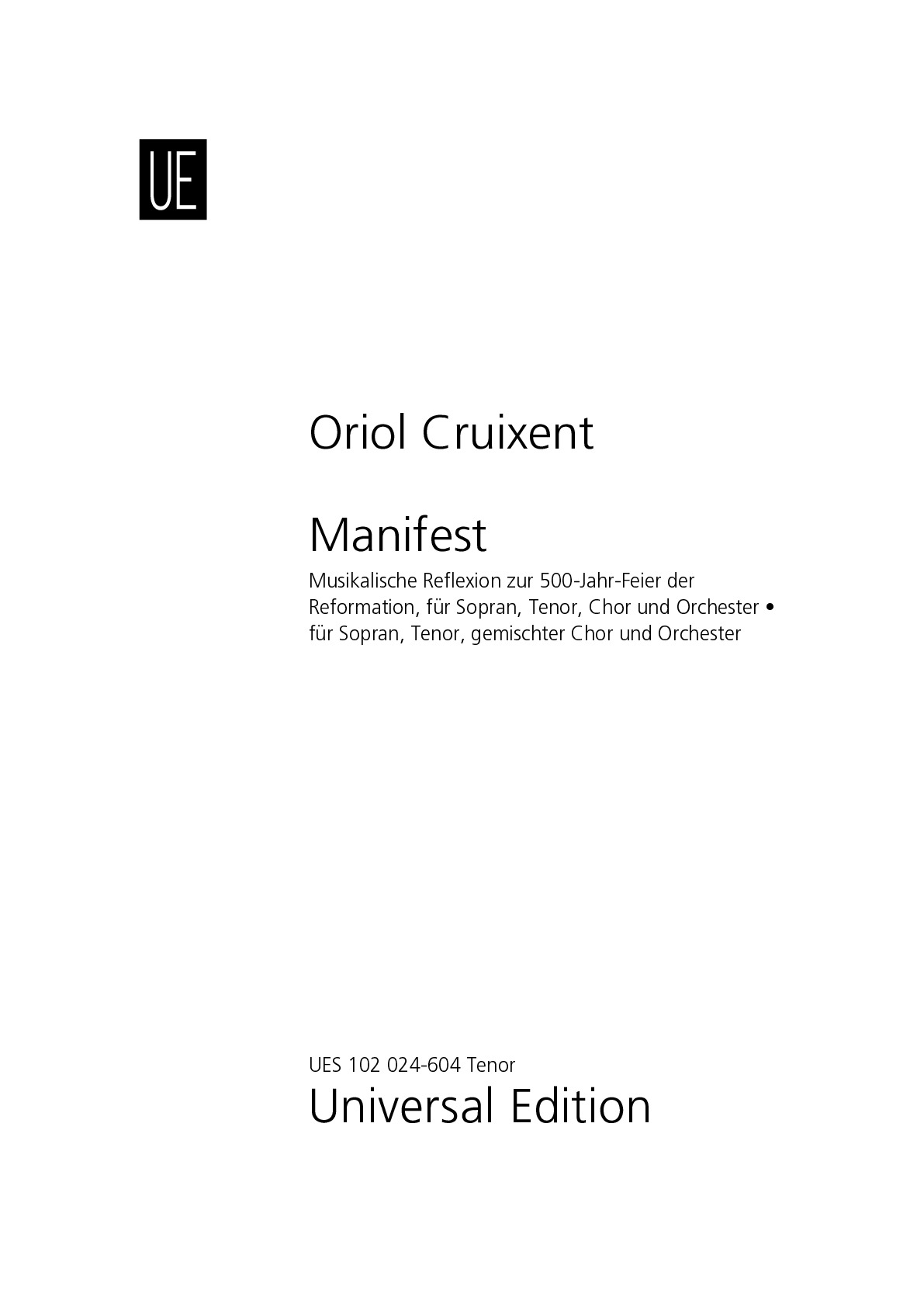

Oriol Cruixent
Manifest
Short instrumentation: 2 2 2 2 - 4 2 3 0, timp, perc(3), str
Duration: 22'
Choir: mixed choir
Solos:
soprano
tenor
Instrumentation details:
1st flute
2nd flute (+picc)
oboe
cor anglais
1st clarinet in A
2nd clarinet in A
1st bassoon
2nd bassoon
1st horn in F
2nd horn in F
3rd horn in F
4th horn in F
1st trumpet in C
2nd trumpet in C
bass trombone
1st trombone
2nd trombone
timpani
percussion (3 players)
violin I (14 players)
violin II (12 players)
viola (10 players)
violoncello (8 players)
double bass (6 players)
Manifest
Sample pages
Video
Work introduction
The work “Manifest” for soprano, tenor, choir and orchestra was commissioned by the Bavarian Radio, finished in December 2016 and premiered by the Munich Radio Orchestra and the Bavarian Radio Choir on June 2017 in Munich. It is a musical, personal reflection by the composer Oriol Cruixent on the 500th anniversary of the Reformation.
From a dramaturgical point of view, historically relevant events and texts of the Reformation serve as a musical thread in “Manifest”, mostly in chronological order, concluding the composition with essential philosophical concepts of the Gospel. In “Manifest”, excerpts from Luther's text To the Christian nobility of the German nation from the betterment of the Christian state from 1517, from the 95 theses from 1517 and from the Defense speech at the Reichstag in Worms from 1521 are used. The controversial third verse of Martin Luther's chorale “A strong castle is our god” from 1521 was also included (the prince of this world, if he is sour, he will do nothing to us), as well as later statements from 1525 and 1533 including the disputed position of Luther against the peasant war and the execution of Thomas Müntzer by the princes. (“It is better that all peasants are slain than the princes and authorities”).
From a compositional point of view, “Manifest” is based on melodic material from the Lutheran chant A strong castle is our god from 1521, which appears in different illuminations and variations, including two four-part sections (marks E to F and H to M), both composed in a contrapuntal style of the Renaissance vocal music. It is worth mentioning the technique of modulation developed at these two points, which is based on the inductive reaction of magnetic fields: all pitches sung by the tenor solo, as soon as they move away from the diatonic constellation, "influence" (and thus change) the current, momentary harmonic constellation in both choir and orchestra suddenly. This modulation method was developed by the composer to musically underline the powerful, influential, assertive, even extremely “polarizing” power of Luther.
With “Manifest” Oriol Cruixent dares a critical-constructive look at the time of the Reformation through a profound examination of publications, letters and statements of Martin Luther, its revolutionary traits as well as its paradoxes and contradictions. Eventually, the philosophical essence of the message of the Gospel should be the key for making our culturally and socially after 500 years still complex time more inelligible.
What is necessary to perform this work?
INSTRUMENTATION
2 Flutes (Flute 2 also Piccolo)
1 Oboe
1 Englisch Horn
2 Clarinets in A
2 Bassoons
4 Horns in F
2 Trumpets in C
2 Trombones
1 Bass Trombone
Percussion (3 Players)
Player 1:
3 Anvils (pitches: high, middle, low),
1 Wind-Gong, middle-big
Player 2: 1 Gran Cassa
Player 3: 1 Vibraphone
Timpani
Strings (min. 8-6-4-4-3, max. 14-12-10-8-6)
SINGERS
Soprano (Consciousness): Coloratura Soprano. Sings from the balcony (e.g. Organ).
She should not be seen until her appearance, at Mark S)
Tenor (Martin Luther): Dramatic Tenor. Towards the end of his intervention he leaves the stage slowly, while still singing.
Choir: SATB (min. 24 chorists). The Choir starts singing in off, and enters the stage while singing, at the beginning of the piece

